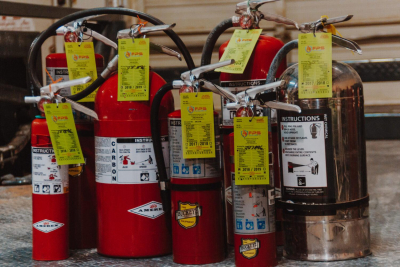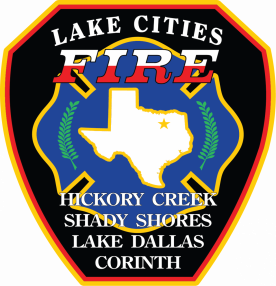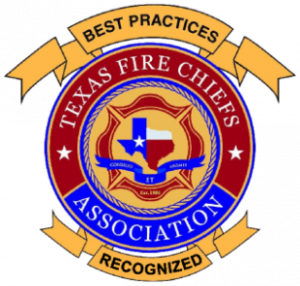Fire Extinguisher Annual Inspections
Fire Extinguisher Inspections for Commercial Properties: Everything You Need to Know
Fire extinguishers are the first line of defense when it comes to stopping a small fire from becoming a much bigger, and potentially life-threatening fire. Fire extinguishers need maintenance and inspections to ensure they will do their job in the event of a fire. The standard fire extinguisher requirement for commercial business is a 2A:10BC fire extinguisher - designed to fight fires involving ordinary combustibles (Class A), flammable liquids (Class B), and electrically energized equipment (Class C). The "2A" rating means it has the extinguishing power of 2.5 gallons of water for Class A fires, while "10BC" indicates it can cover 10 square feet of a Class B & C fires which makes it safe to use on electrical fires.
The National Fire Protection Association (NFPA) requires the following inspections and testing procedures on standard ABC fire extinguishers:
- Monthly, visual self-inspections on all fire extinguishers in your facility
- Annual inspections on all fire extinguishers, performed by a certified technician
- 6-year maintenance and recharge on all fire extinguishers, performed by a certified technician
- 12-year hydrostatic pressure testing, performed by a certified technician
Monthly Fire Extinguisher Self-Inspections
Monthly fire extinguisher self-inspections can be completed in-house by one of your own employees. It’s a simple process that can be completed with very little training. Below is a step-by-step guide to completing monthly fire extinguisher self-inspections:
- Ensure fire extinguisher is in its designated place
- Make sure the fire extinguisher is visible and/or there is signage in place indicating where the fire extinguisher is located
- Determine if the fire extinguisher can be easily accessed
- Ensure the pressure gauge is operable
- Make sure the fire extinguisher is full
- Make sure the fire extinguisher has it a current annual inspection tag
The NFPA requires that all fire extinguishers be inspected with these guidelines prior to and during installation. Detailed records must also be kept of each inspection. This information can be displayed on a fire extinguisher tag or on a separate paper or electronic file. The only details that are required for your records are the month and year of the inspection and the name of the person who performed the inspection.
Annual Fire Extinguisher Inspections
Per NFPA 10, a full maintenance check needs to be performed every 12 months by a state certified fire extinguisher inspector. Unlike the monthly fire extinguisher inspections, the annual inspections must be administered by a Texas licensed fire protection company. The inspector will come to your location and check all mechanical parts, pressure, in-service date and verify that there are no issues with your extinguishers. The Lake Cities Fire Department is not a state licensed fire protection company and can not service or maintenance fire extinguishers.
The goal is to ensure there are no expelling means and that the physical condition of each fire extinguisher is in good shape. Once the fire extinguisher has passed inspection, the state licensed inspector will place a compliance inspection tag on the fire extinguisher. The inspection tag will show the month and year it was inspected, and is valid for one year from that date.
Tips:
- It is recommended to have a Texas licensed fire protection company provide the fire extinguishers for your commercial property. They will install, service, maintain, inspect, test, and replace the fire extinguisher they supply.
- It is best to schedule your annual fire extinguisher inspections with your other fire protection inspections (fire sprinkler, fire alarm, etc.) to save time and money by eliminating additional trips and invoices.
6-Year Fire Extinguisher Inspection & Maintenance
NFPA 10, requires all stored pressure fire extinguishers to be serviced and recharged every six years. This maintenance must be completed by a state certified fire extinguisher service provider. Below is a breakdown of the 6-Year fire extinguisher maintenance process:
- Inspection & ID
A state certified fire extinguisher experts will come to your location and perform an annual inspection on all fire extinguishers.
- Discharge and Valve Stem Replacement
They will discharge the existing dry chemical powder in the extinguisher and replace the valve stem and the O-Rings to prevent any future leaks.
- Dry Chemical & Nitrogen Refill
The fire extinguisher is then refilled with an ABC dry chemical and nitrogen to the manufacturer’s recommended weight.
- Testing for Leaks
To ensure there are no leaks in the extinguisher, the technician will use a mixture of water and soap to check for small leaks.
- Compliance Sticker & Inspection Tag
The 6-year compliance sticker as well as the annual inspection tag are placed on the cylinder and it now meets NFPA compliance.
12-Year Fire Extinguisher Inspection & Maintenance
The Department of Transportation (DOT) requires that all low-pressure cylinders (like fire extinguishers) be submitted for hydrostatic testing once every twelve years to remain in safe, working condition.
Because these tests require special equipment and high pressure, any hydrostatic testing should only be performed by state certified individuals with the proper equipment. Below is a breakdown of the 12-Year hydrostatic testing process:
- Cylinder Discharge
A state certified technicians identifies and inspects the fire extinguisher. The cylinder is then discharged to prepare for hydrostatic testing.
- Hydrostatic Testing Machine
The fire extinguisher is connected to the hydrostatic testing machine and is lowered into the water test jacket cylinder for pressurization.
- Pressure Testing
The fire extinguisher will be pressurized using a water expansion method and must hold the manufacturer’s specified pressure for at least 30 seconds.
- Air Dryer
After the tank has been tested, the liquid will be drained, and the fire extinguisher will be put on a heated air dryer.
- Cylinder Refill
The fire extinguisher is then refilled and affixed with a hydrostatic test sticker/metal stamp directly on the cylinder.
- Test For Leaks
Finally, the cylinder is tested for leaks. If no leaks are present, the annual inspection tag is placed on the cylinder and the fire extinguisher is now NFPA and D.O.T compliant.
Tip: It is cost effective to have your fire extinguishers replaced at the 6 year mark, than having the 6 year and 12 year service.
Note: The Lake Cities Fire Department does not collect or dispose fire extinguishers. Please see Fire Extinguisher Disposal in Education and Outreach.
For more information about fire extinguisher inspections, please visit the NFPA website.



